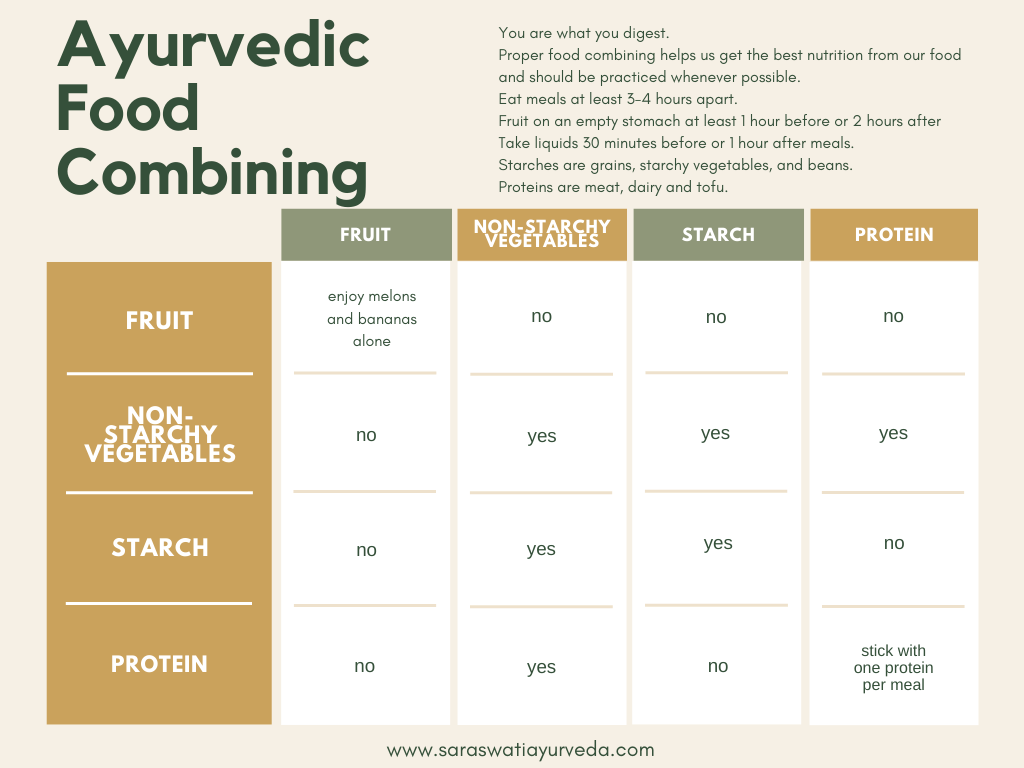Food combining has become a hot topic lately and with good reason. We want to know if the healthy food that we’re eating is being digested properly. In Ayurveda, we know that you are not only what you eat but what you digest.
You’ve probably experienced that feeling of food just sitting in your stomach for hours? Not fun. If you’d rather feel light and energized after eating, then Ayurveda offers wisdom about which foods play well with others. Certain combinations will promote optimum digestion and nutrient absorption. Others, are indigestible, leading to gas and bloating, and ultimately becoming toxins in the system.
Proper food combining helps us get the most nutrition out of our food and should be practiced whenever possible. That said, the occasional poorly combined meal shouldn’t cause too many problems. Quantity and quality of food play a large part in digestibility. A poorly combined meal of healthy food will always be better than fried or processed food.
Think of food in four main categories - fruit, non-starchy vegetables, starches and protein. Each requires a different digestive environment in the gut. Fruit breaks down quickly and should be consumed alone on an empty stomach. Starches require an alkaline environment and proteins require an acidic one. The enzymes required for each will neutralize or cancel each other out, leading to neither being digested well.
When in doubt, keep meals simple. Fewer ingredients and smaller quantities will be lighter on digestion. After eating, allow 3-4 hours for digestion to complete before adding new food to the system.
Fruit: eat on its own, 1 hour before other foods or 2 hours after a meal. When we combine fruits with other foods, the fructose is not burned as energy but stored as fat.
Melons cannot be mixed with any other fruit or food. Bananas are best alone and become toxic when mixed with milk or yogurt. Keep acid fruits together and sweet with sweet. Low sugar fruits like berries are easiest to combine and can be added to yogurt. Apples, pears or raisins can be cooked with oats.
Non-starchy vegetables: think leafy greens, asparagus and cruciferous vegetables like broccoli, cauliflower or brussels sprouts. These combine well with starches, other vegetables or proteins.
Starches: grains such as rice and wheat, quinoa and starchy vegetables such as potatoes, sweet potatoes and carrots. These mix well with non-starchy vegetables or other starches.
Protein: dairy, meat, eggs and tofu. Avoid mixing with other proteins such as cheese and eggs. Best mixed with green non starchy veggies. For optimum digestion, do not combine with starches.
Beans are mostly starch with some protein which is why they can be challenging to digest. They are best mixed with other starches and/or non-starchy vegetables. Avoid mixing with cheese, eggs or animal proteins.
Have you tried food combining? I’d love to hear about your experience! Comment below with tips, tricks or questions.





